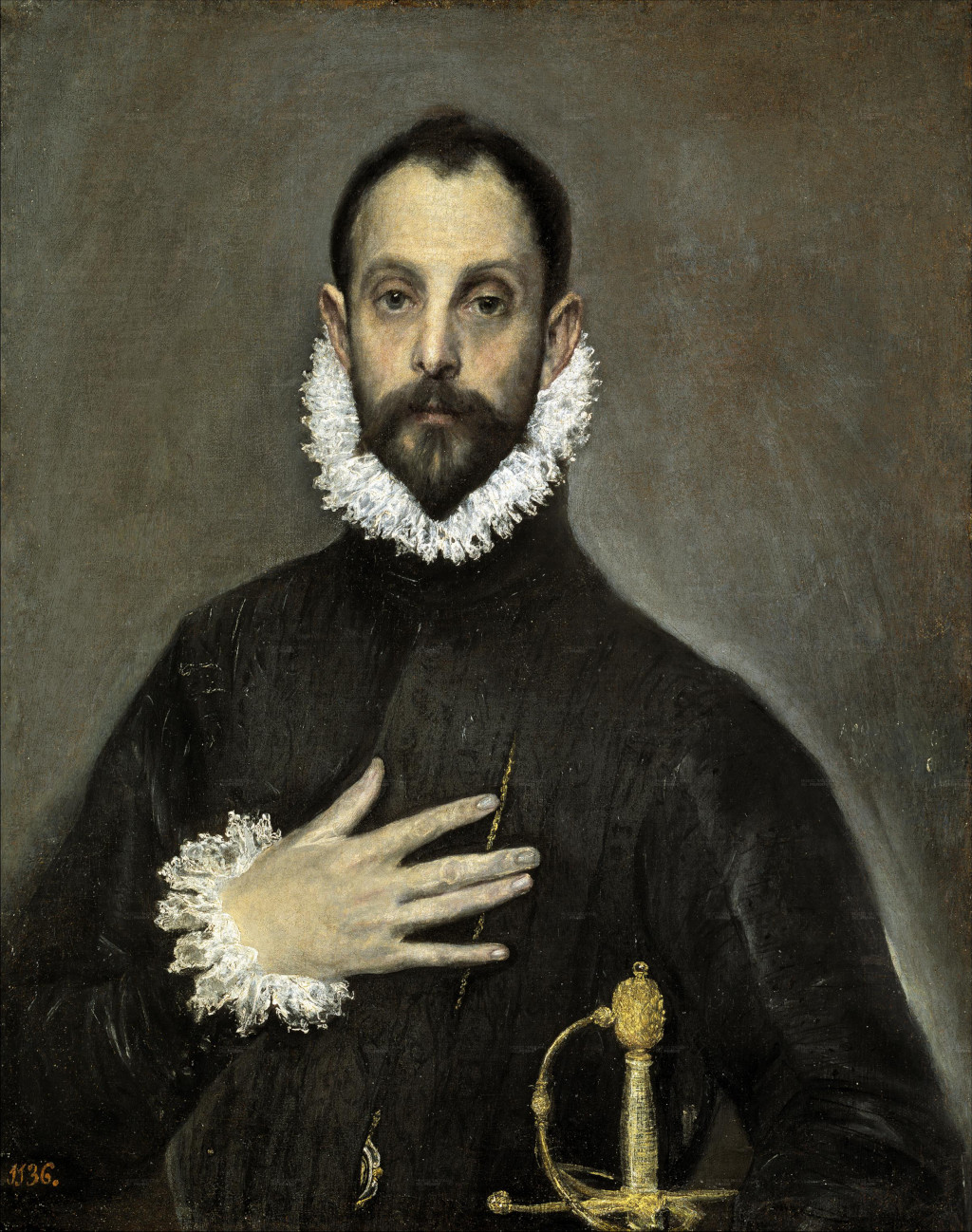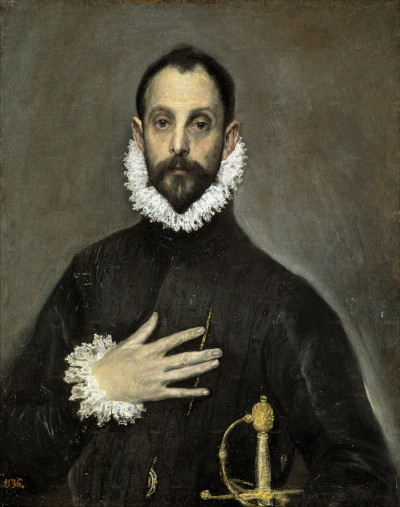This memorable portrait by El Greco comes from circa 1580 and is one of many works that he produced within this genre. It now resides within the Prado Museum in Madrid, Spain and there remains discussion over the precise identity of the subject in this piece.
The smartly-dressed gentleman stands chest-on within The Nobleman with his Hand on his Chest, staring directly at us. El Greco features him from the waist upwards in this traditionally styled composition. Despite the simplicity of the piece, there are still many touches of flair by the artist which remind us of its attribution to El Greco. The shape of the subject's face reminds us some of the self portraits that he produced, leading experts to suggest that it might be another depiction of El Greco himself. He stands in front of a plain background, with some stunning white touches around his neckline, as well as his wrist (cuff and ruff). A sword handle also appears at the very bottom of the composition, perhaps to signify the subject's role in society. There are also further details which are harder to make out, such as a ribbon or strap which comes over his left shoulder and runs diagonally, covering a belt buckle or jewellery around his stomach. Clearly this is styled as a high ranking respected figure who potentially may have commissioned the piece himself, or been gifted the opportunity by another, perhaps his employer.
Most of El Greco's portraits were actually themed along religious lines, rather than of people from his own period, but other related works include the likes of Lady in a Fur Wrap, and this portrait of Cardinal Fernando Nino de Guevara. The artist would complement his focus on religious art with the odd portrait from time to time which might have brought in welcome funds for other projects, as well as varying the work that he was doing. El caballero de la mano en el pecho, as it would have been known locally in Spain, may have actually been a portrait of Juan de Silva y Ribera, 3rd Marquis of Montemayor and warden of the Alcazar of Toledo and we do know that the artist lived in this region for many years. Others have suggested it could be a local writer by the name of Miguel de Cervantes, though other artist's portraits of him suggest this to be unlikely. With over four centuries having passed since The Nobleman with his Hand on his Chest was first completed, it is unlikely that we will ever answer this question with any real confidence.
The artist produced this painting in Toledo, where he had already been living for a few years by the time that this commission was organised. He adored this part of Spain and would leave here for many years, with the surrounding landscape and architecture inspiring him to produce a number of paintings including View of Toledo and View and Plan of Toledo. In his name, a museum was later formed and it continues today to teach new generations of the brilliance of the artist, featuring many original artworks from his career. The Nobleman with his Hand on his Chest, however, remains in the Prado Museum in the Spanish capital, Madrid, and one can also enjoy many items from his career there as well. Helpfully, many of those who he would later inspire are also on display elsewhere in the gallery, allowing us to trace the path of art history over the 16th and 17th century from a Spanish perspective.





